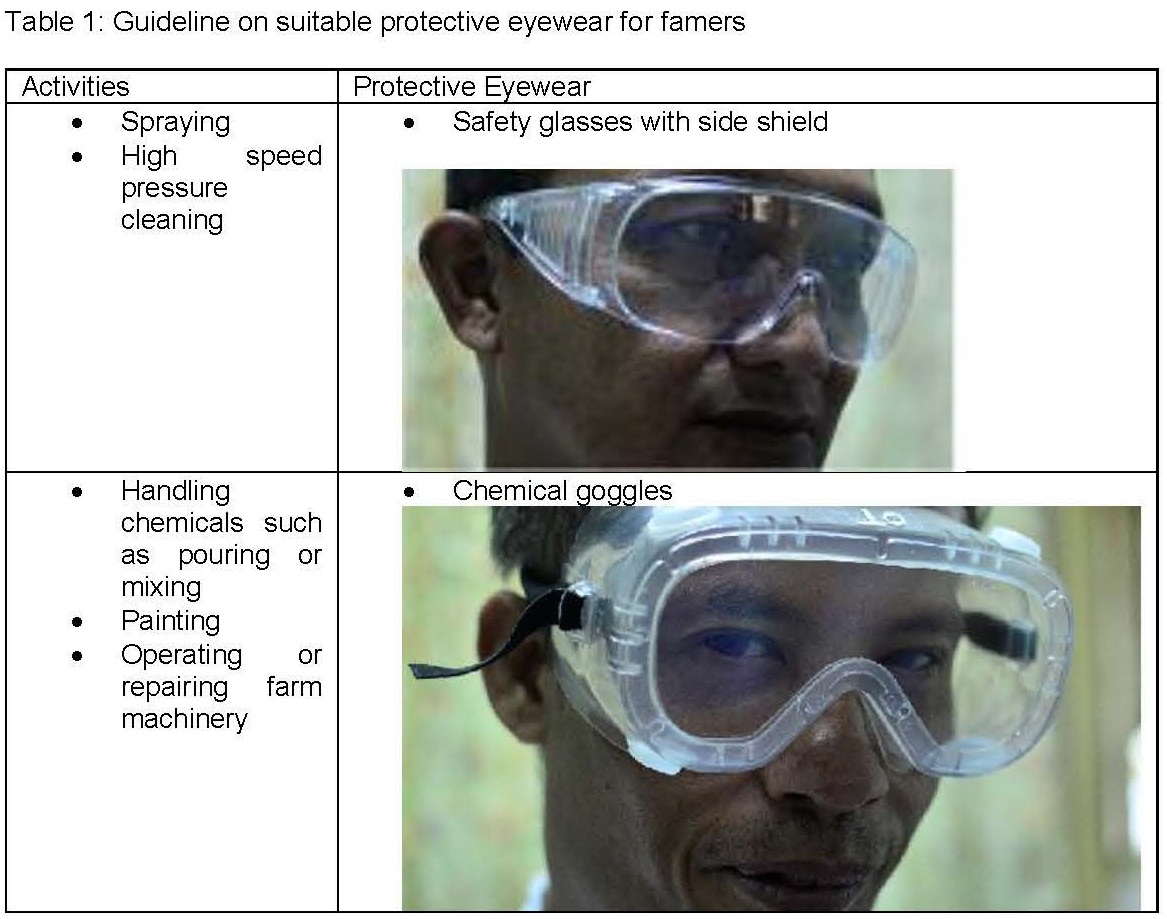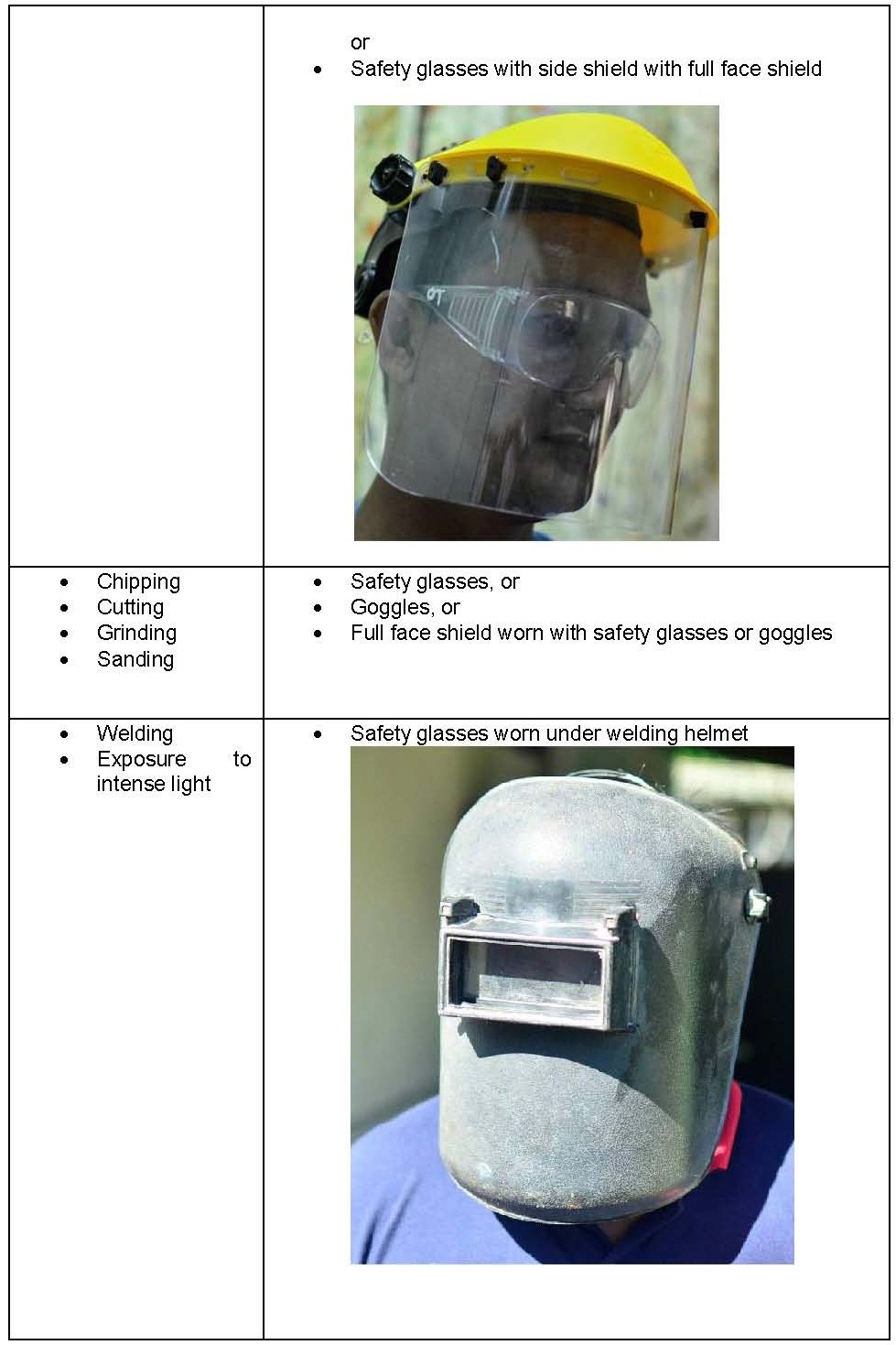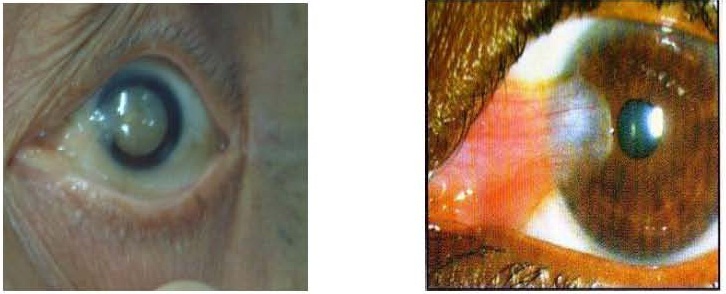Introduction
Farmer’s eyes are the second most frequently injured body part. However, poor awareness among farmers regarding the importance of using an eye protection during farm work can cause a very serious eye injury that may lead to blindness. Eye injuries or eye diseases can occur among those who are involved in farming activities either as agricultural workers or among those involved in occasionally farming as a hobby. According to the Bureau of Labor Statistics of the United States in 2007, about 8.7/10,000 agricultural workers were reportedly injured each year. (1) Farmers are exposed to eye injuries from plants, tools or machineries. The most common eye injury among farmers is corneal (transparent part of the eye) abrasion due to foreign body either from plants or soil. If not properly treated, this simple eye injury can worsen and may lead to blindness. Improper handling or malfunctioning tools or machinery can cause serious eye injury, such as cuts and penetrating eye injury. Chemical substances used in farming either in the form of liquid, spray, aerosol or powder can cause minor to severe injuries to the eyes. If this injury is not treated immediately and properly, it will lead to blindness. Therefore they it must be carefully handled and kept away from children. Eye injuries not only cause pain but also incur time and money, and most importantly, it will cause the farmers not to be able to work due to lost of vision. Eye injuries not only cause pain but also incur time and money, and most importantly, it will cause the farmers
Eye Protection For Farmers
Farmers must use protective eyewear while working to prevent eye injuries and protect their vision. Various protective eyewears for a different farm work activities are available in the market nowadays. Suggestions for suitable eye protections for farmers are shown in Table 1.


A Standard protective eyewear is a must for a better eye protection. Wearing substandard or outdated protective eyewear is not safe. Some of the substandard eyewear break easily on impact and may cause eye injury. An appropriate protective eyewear should be comfortable and properly fit the face and head, to provide full protection and not interfere with the movements. Protective eyewear should easily be cleaned to ensure good vision all the time. Farmers usually have long working hours under the sunlight. This will cause exposure to ultra-violet (UV) rays. UV rays will cause eye sensitivity, eye irritation and inflammation (photokeratitis) in the short term. It is also one of the causes for cataract, pterygium and retinal damage in the long term. Wearing hat and sunglasses during farm work will help to reduce eye exposure to UV rays and glare. However, the wearers have to ensure their sunglasses have UV protection coating.

Cataract
Ptyerygium Avoid wearing contact lenses when handling ammonia or other farm chemicals (certain chemicals will cause damage to the contact lenses). However, if you still have to use the contact lenses, wear chemical goggles with side protection when handling or applying agricultural chemicals. Consult your optometrist or ophthalmologist regularly to check on your contact lenses and eye health status. Wear proper eye protection whenever necessary to prevent eye injuries and diseases. Adding face shield increases protection especially from flying particles and objects. Even though the preventive action seems very simple, it is not readily complies by farmers.
Basic First Aid
The correct first aid for eye injury is critical. Immediate and proper first aid will save the eyes from further injury and blindness. Therefore farmers should have adequate knowledge of first aid for eyes. Each type of eye injury has a different way of treatment. If a small particle of foreign body entering the eyes, blink the eyes and let your tears wash it out or wash the eye with clean water to flush it out. Try not to rub the eyes if possible. If this method does not work, consult a doctor to get the foreign body removed. Eye injury due to blunt object will cause swelling or bruising around the eye globe, apply cold compresses to reduce pain and swelling for 15 minutes and again each hour as needed. Consult a doctor to make sure that no occurrence of internal damage. For penetrating injury or a cut, seek medical treatment immediately. Do not attempt to remove any object stuck in the eye; this will prevent further damage to the eye. Do not apply any medication or cream to the cut or wound. It is advisable to cover the injured eye lightly with any available clean material (cloth/paper/). Avoid any pressure to the eye. If chemical splashed into your eye, wash it continuously with clean water for at least 15 minutes to wash out the chemical. While washing, try to roll your eyes in all direction and invert the eye lid if possible (to wash the chemicals underneath eyelid). Do not instill any eye drop before see the doctor. Take the chemical label or container with you when you see the doctor. To avoid eye infection, always wash your hands before you touch or rub your eyes. Do not wear dirty protective eyewear. Store the eye protection in clean, dust-proof containers.
References
- Bureau of Labour Statistics. Incidence rate for nonfatal occupational injuries and illness involving days away from work per 10,000 full-time workers by industry and selected parts of the body [Table R6]. http://www.bls.gov/iif/oshwc/osh/case/ostb1662.pdf.
| Last Review | : | 22 September 2014 |
| Writer | : | Pn. Nurul Farhana bt. Abu Bakar |
| Accreditor | : | Pn. Nor Aini bt. Hanafi |







